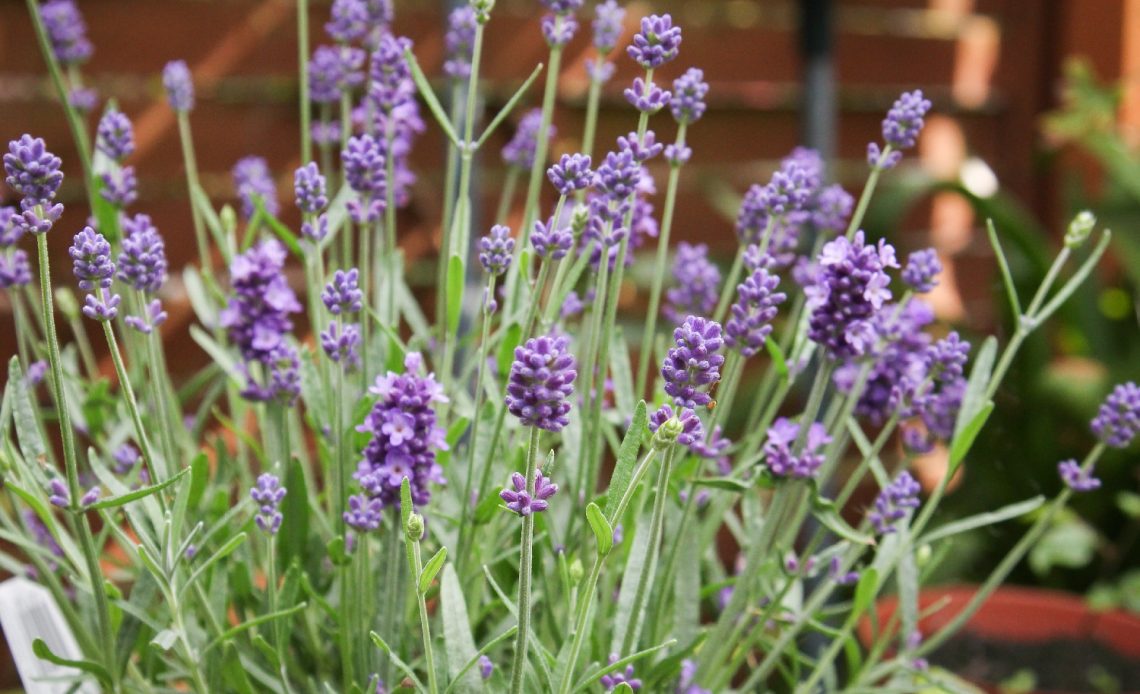

We’re here to help! Wild Yards is a completely free website that is 100% dedicated to helping you create a wildlife-friendly, sustainable yard. Read more
WildYards is reader-supported. When you buy a product through a link on our site, we may earn a comission. Every product is independently selected by our (obsessive) editors and our reviews are unbiased and objective. Read more about our mission or our privacy policy.
Lavender is a visually striking herb with a strong, distinct fragrance. Many people feel a herb garden is not complete without it! However, many of us usually buy them as ready-made plants. So, how do you grow lavender from seed for your herb garden?
Growing lavender from seed is easier than you might think, as long as you have sunny planting spots, nutrient-rich soil, and plenty of patience. Lavender is particularly vulnerable to disease and fungi, so you’ll need to be protective of these blooms.
Sourcing your lavender seeds
The first step to growing herbs such as lavender from scratch is to source the seeds yourself – you can either find them scattered across your garden or local fields or buy them from a garden vendor.
Finding your own lavender seeds
Lavender seeds are greenish-gray in color, measure up to 20 mm, and are generally shaped like rice grains. Mature seeds eventually fall off plants unless shaken by wild animals, battered by wind, or eaten.
Wild lavender seeds are often carried in the wind, transported in the paws or claws of animals, from which they may tumble, and self-set.
To extract viable seeds, they should be attached to the top of a stem and dry to the touch. To remove them from stems, slide your fingers from the bottom row of seeds and gently draw your fingers towards the tip of the stem.
Seeds will separate from the stem easily if they are ripe. If they resist too much, they are not ready for collection. Give them a couple more days and check back regularly.
Collecting lavender seeds can be a fiddly business, as they can prove slippery to hold. Use a piece of kitchen towel or toilet tissue to wrap around the stem and contain the seeds as you remove them. This is particularly useful if you collect seeds after rain or during early mornings following a heavy dew.
At the earliest opportunity, gently spread your seeds on a tray on a sheet of white paper or fresh tissue so that you can see any insects which have hitched a ride – and remove them.
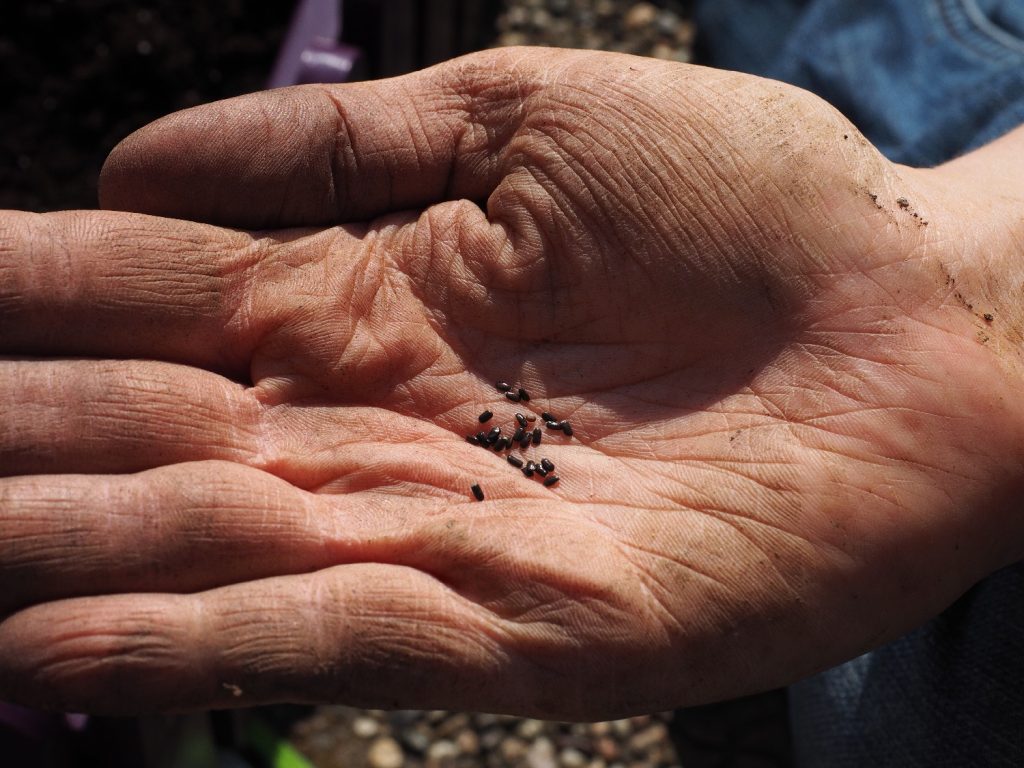
Buying lavender seeds – what to look out for
Most garden stores or vendors will have lavender seeds available for you to buy and plant from home, available in packets – which can be useful as they will provide information about your chosen lavender species, color, and potential height.
Before buying from a store or vendor, check the expiry date on the packet. The nearer to the expiry date you use the seeds, the greater the possibility for some reduction in numbers. If buying online, this information should be made clear to you before you checkout!
If you choose to buy seeds, you may only need to do it once. Learning how to propagate lavender from your own plants will usually prove to be immensely satisfying and, of course, free of charge!
Setting and planting your lavender seeds
Once you’ve sourced your lavender seeds, lay them out on a seed tray, removing anything that’s moving (such as insects) and any visibly damaged or squashed seeds. They can be stored in a sealable plastic bag in moist soil for up to three weeks. You’ll need to keep your seed tray indoors for the first leg of lavender care, as you’ll need to ‘harden’ your plants in a few weeks to come when seedlings are large enough to take outside.
If you can’t keep your seeds near sunlight while setting indoors, invest in a grow light and soil thermometer. These tools will help you to provide the heat and light conditions your plants will thrive in once transplanted outside. Typically, you can expect lavender to thrive anywhere from 63 to 70 degrees Fahrenheit.
It’s essential to keep your seeds away from cold drafts and ensure you provide ample drying time between each water. Don’t be too disheartened if your lavender doesn’t start scaling up for the first year – it’s a plant that will need time and patience to come into its own.
Transplant them from trays into pots, ready to move into the garden when the risk of inclement weather has passed. The ‘hardening’ process is where you’ll gradually move your lavender into the garden so the seedlings can start getting used to outdoor light and moisture. Move them into your garden in the tray for a few hours to days at a time, and then when you’re ready to transplant, your lavender plants will be more likely to thrive.
When it comes time to transplant into the garden, pick a soil spot that drains well and is in the wide open sun. If you like, providing a rich source of compost as a growing medium can help to improve drainage and give your lavender a nutrition boost.
They need light to germinate, so when you are ready to plant them, choose a rich growing medium and place them at a shallow depth with a light covering. Try not to cover your seeds completely, as they’ll need plenty of access to the sun for the best growth.
Lavender will always need good drainage as most varieties are at risk of disease and fungus – which also means that you should take care watering them gently. They can germinate in as little as two weeks, but you may find that if temperature or light is lacking, they can take double the time to start sprouting.
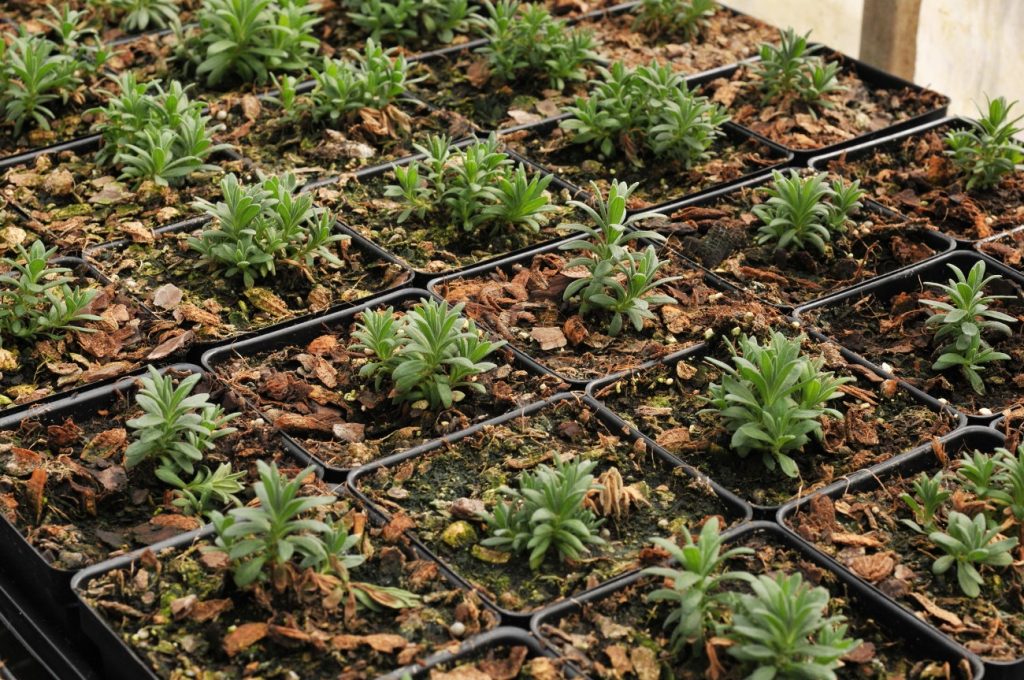
When will lavender start blooming?
Lavender tends to bloom in the early spring, though this can vary from species to species. As established, most varieties require patience – and you’re unlikely to see much growth or any flowering during the first year of planting seeds.
Regardless, it’s a good idea to continue watering, feeding, and pruning your lavender to ensure it can continue blooming for the seasons to come.
Caring for your new lavender plants
Lavender seedlings and plants are typically hardy but cannot tolerate freezing conditions nor be awash in poorly drained soil! They thrive in full sun, though you can also plant them in semi-shade if necessary. Keeping these plants in the complete shade is a no-no, as they won’t flower – meaning you can expect fewer visits from pollinators.
Watering cycles
Most varieties of lavender have shallow roots that won’t delve deep enough to capture buried moisture. If leaves begin to fall off and flower stems look feeble or droop, your plant has too little or too much water! After transplanting, you can generally expect lavender to root successfully within three weeks – and you won’t need to water them more than once a week (even once every two weeks once roots start to set).
When your lavender starts to bloom, it’s worth increasing watering slightly, though only as much as once per week. Flowering lavender will get quite hungry – though it is generally undemanding through much of its life cycle.
Feeding lavender seeds and seedlings
Lavender will respond well to a dose of fertilizer or mulching from time to time – top your soil dressing with organic compost every six months to ensure your lavender gets a balanced diet!
These plants prefer a pH level of between six to eight, therefore thriving in slightly acidic soil. You can increase the level by adding calcium carbonate or limestone – be sure to invest in pH testing strips from your local garden store or vendor or a trusted source online.
Protecting your lavender seedlings
While reasonably hardy in most USDA zones, lavender seedlings can suffer a little in extreme temperatures or weather conditions, such as high winds. If your seedlings experience weather damage, try using a garden table or chair to shield weakened plants until they recover.
Canes can be used to form support for lavender seedlings, though be sure to avoid using plastic (as it can quickly overheat tender plants). Where possible, opt for bamboo support canes.
Don’t be afraid to sink canes into the land around your lavender seedlings. Lavender roots are famously shallow, so position your supports sufficiently distant from the center of the plant (and hence its root formation).
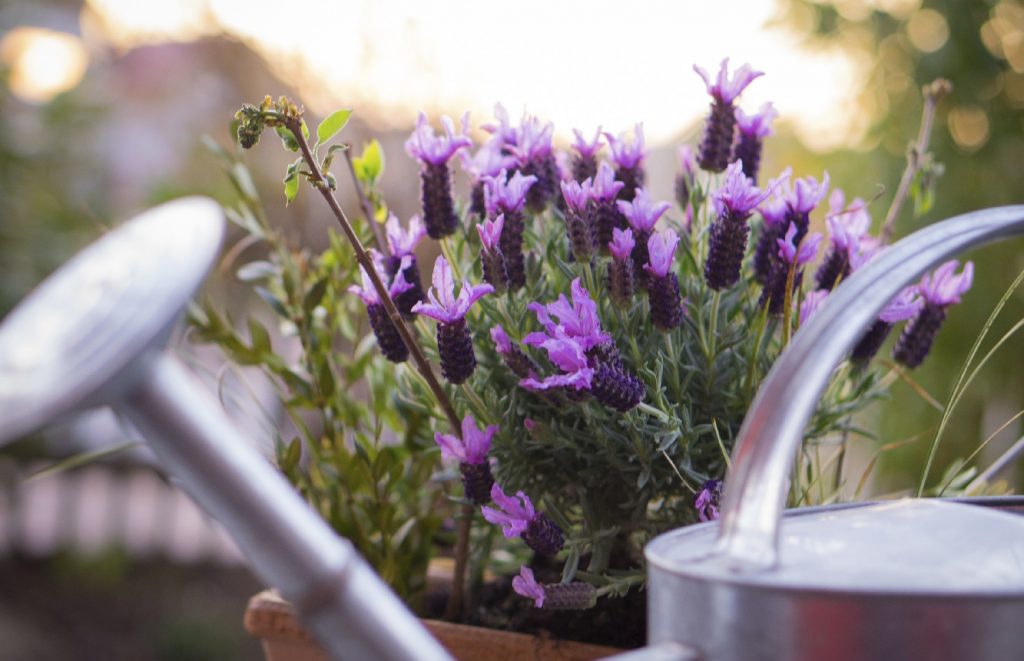
What should I do if my lavender seedlings dry up?
If you’ve put lavender seedlings in a container that has dried out, they will wilt and die quickly. Keep in mind that if your growth medium is warm and you hit the seedling with a cold shower, the shock may also prove fatal. If you overcompensate by drenching the seedling, it may also perish. Root rot is a significant killer of this plant, and it’s susceptible to quick changes – as you saw during the hardening process, you need to be patient and gradual in your care.
To rescue seedlings in containers that have dried out, take said containers out of direct sunlight. If they’re in the soil or you can’t move your container(s), try to give your seedlings a little shade. This is easy to do by setting up a small guarding screen (or parasol) and moistening the growth medium a little.
Should I prune my lavender?
Pruning lavender is good to keep your plants blooming regularly – make sure to clip as low as two-thirds down the stem after they’ve flowered. You’ll normally need to do this from the second year of blooming onwards, and often twice a year (again in fall, for example), to keep flowers bursting back for the next season.
How can I protect my lavender from garden pests and fungi?
Lavender is easily protected from invasive pests such as aphids through a simple water spray or by attracting pollinators such as hummingbirds into your garden. Hummingbirds will not only feed on lavender for their abundant nectar but will also feast on any aphids that dare to buzz past.
Without visiting hummingbirds, you can remove aphids from lavender with a quick burst of soapy water. Why not grow dill or rosemary, too, as companion plants? These herbs are particularly aromatic and aren’t favored by roaming aphids.
Aphids can spread some diseases and fungi that can stunt lavender plants, such as the alfalfa mosaic virus. This virus won’t kill your plant, but there’s no known cure – take care when cutting and transplanting lavender in the future to avoid spreading the disease.
There’s little need to worry about visiting deer eating lavender, mainly thanks to its strong smell and textured leaves.
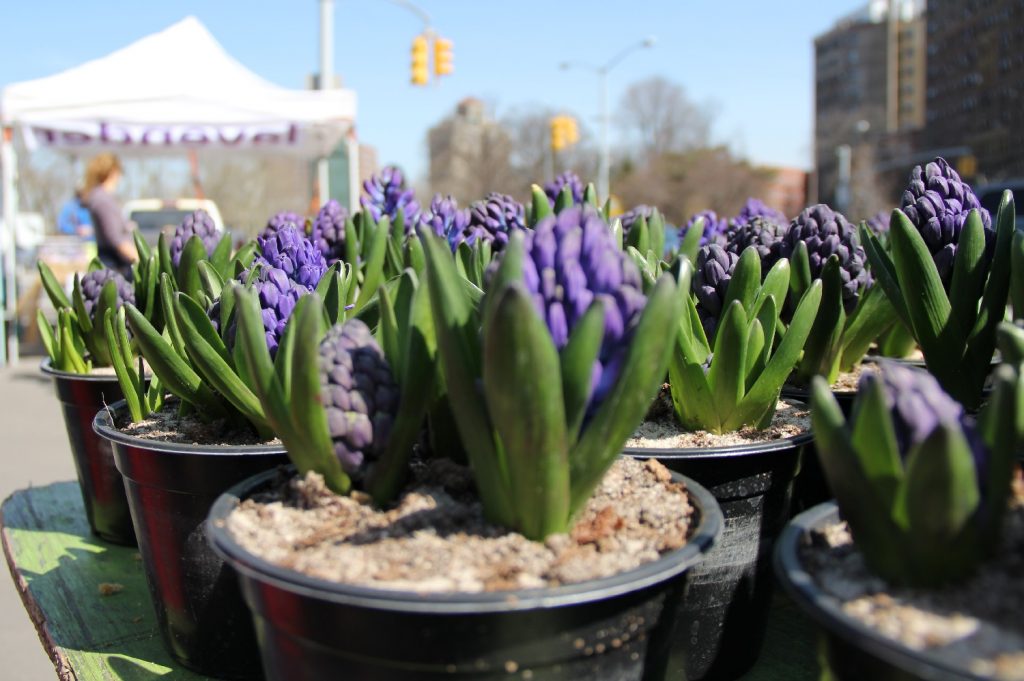
What types of lavender can I grow from seed?
The choice is yours – there are more than 40 different types of lavender plants that split into hundreds more variations and hybrids. Thanks to its ease of propagation, one of the most popular types of lavender to grow in the US is English lavender, or Lavandula angustifolia – which thrives well across USDA zones five up through nine.
Less hardy varieties – but which still provide long blooming seasons and wonderful bursts of color – include French lavender (Lavandula dentata) and Spanish lavender (Lavandula stoechas). You’ll find many different specimens growing wild or available to buy in seed packets from local garden stores and vendors.
Can I attract wildlife with lavender?
Lavender is a popular plant with many pollinators, thanks to its large nectar caches and appealing colors. Butterflies like feeding from lavender, thanks to its ease of access for nectar, as they can easily sit and rest while drinking.
Bees visit lavender as they find their soothing, purple colors attractive, and they can rely on their nectar stores to replenish across the blooming season. Hummingbirds also enjoy feeding on lavender because its flower shapes are easy to dip beaks into for nectar feasts.
Is it worth growing lavender from seed?
Growing lavender from seed can be very rewarding – it’s a sweet-smelling, pollinator-attracting herb that’s proven useful in medicine and cuisine alike. Growing your first crop of lavender from scratch will take time and patience, but if you avoid drenching your plants and keep them pruned, you can expect most varieties to keep flowering season after season.
There are many plants that look like lavender you may wish to grow in your garden, too – if these herbs don’t appeal to you right away!
